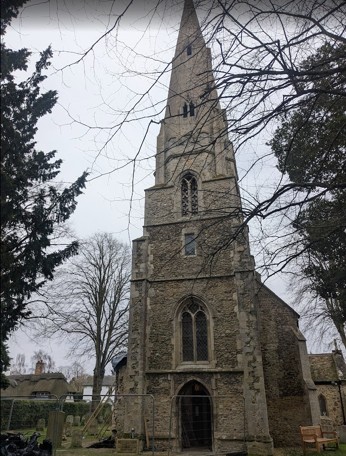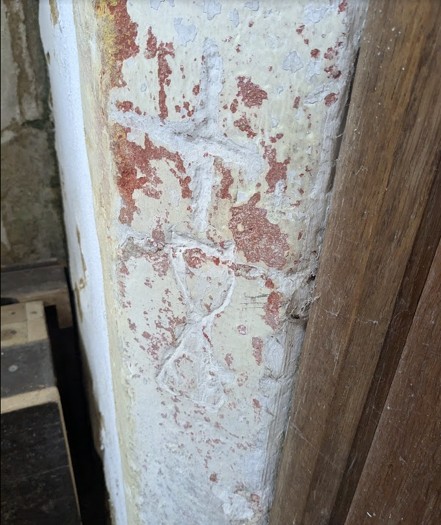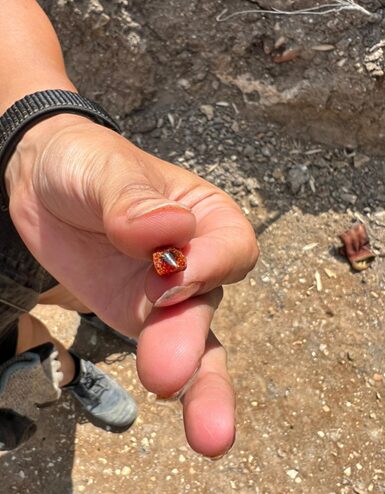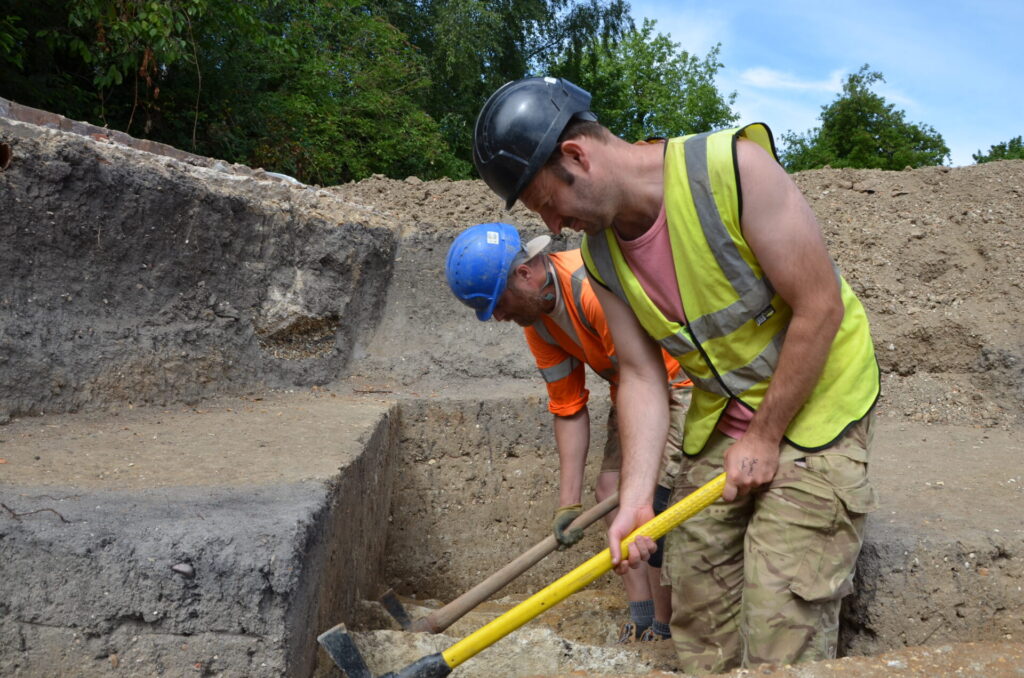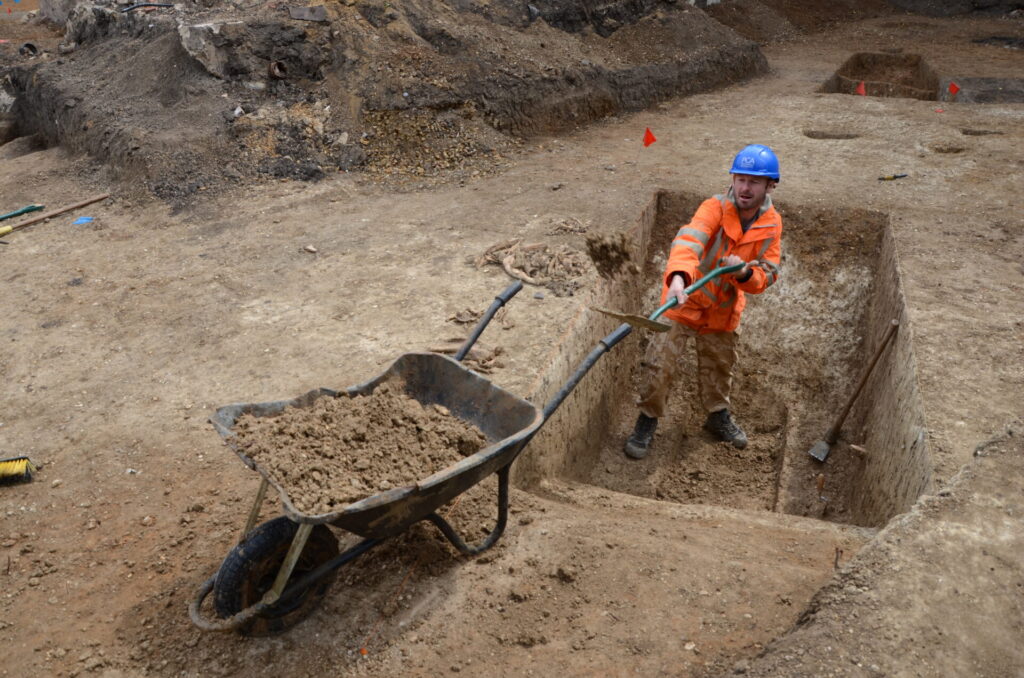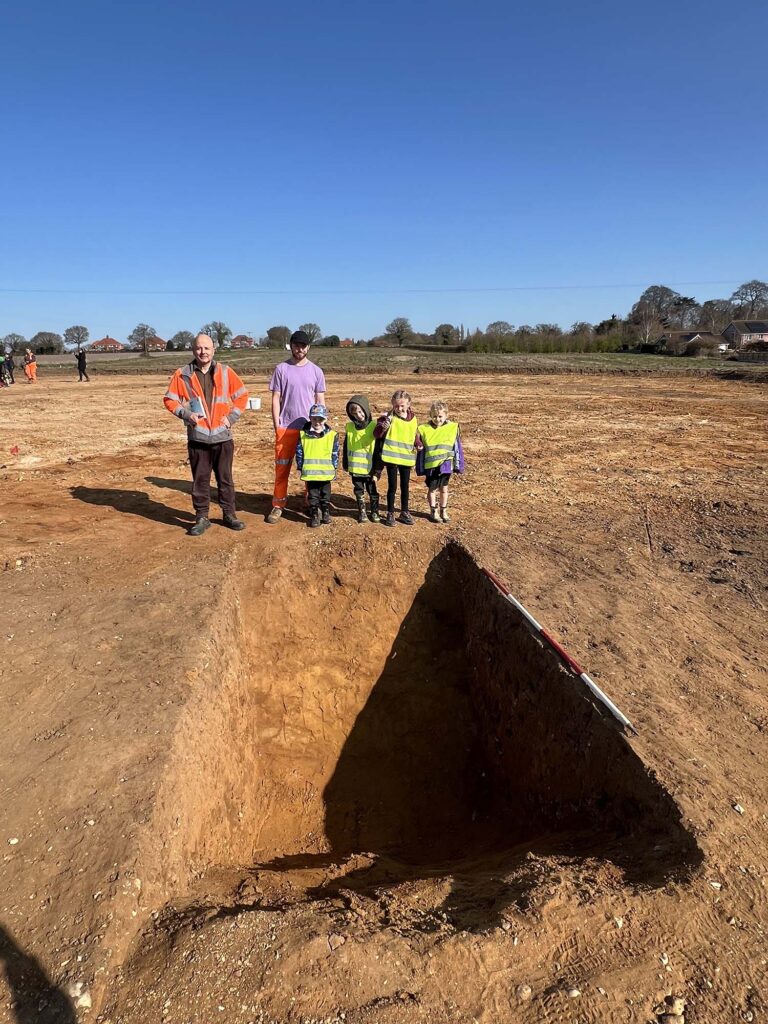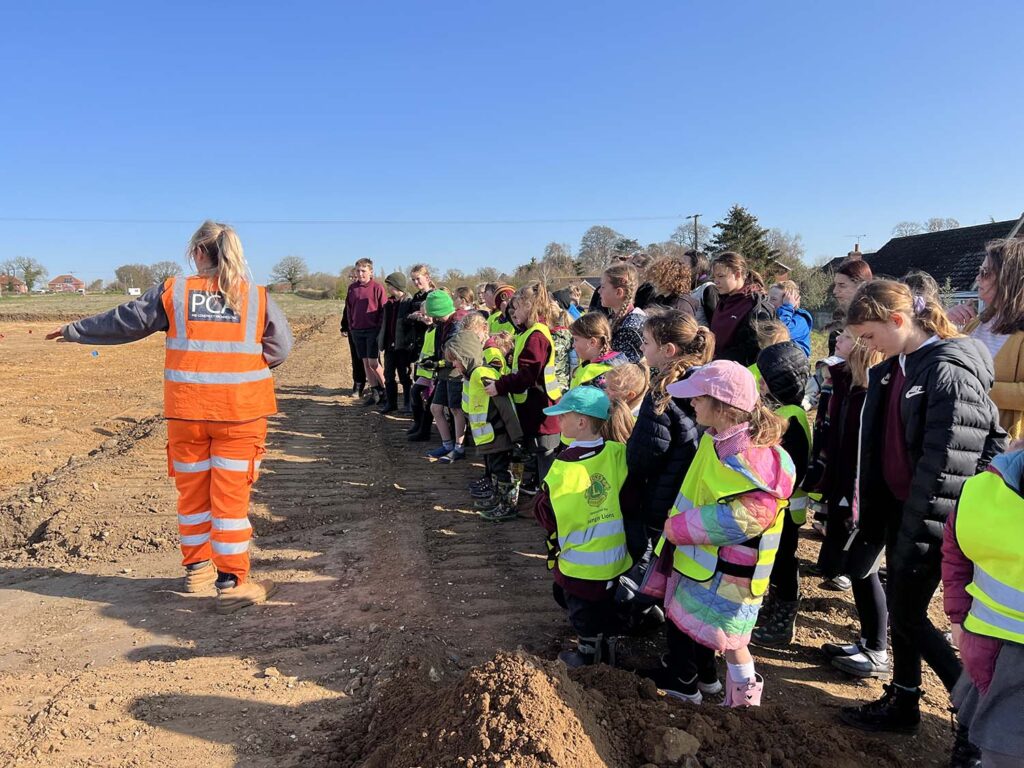
We were delighted to return to St Mary’s Church, Houghton, last weekend to share the findings from our recent below-ground works with the local community.
The talk, by Michael Joyce and Will Stafford, explored the history of the church and the surrounding area, drawing connections between the archaeological discoveries and the village’s medieval past. The event was well attended, with the audience engaging enthusiastically through questions and discussion.
The Rector, Geoff Boucher, praised the event, commenting:
“Just the atmosphere in the building and the questions that were asked indicated to me that the presentation was very well received. It was engaging on the local level and the wider historical level. There was also a wholesome sense of completion to the project in the churchyard and a sharing with the community that all had been done professionally, respectfully, caringly. There were plenty of positive comments on the evening and since which confirm how much the evening was appreciated. A proper coming together of the local community in the church building which maybe our medieval forebears would have recognised.”
The weekend concluded with the rededication ceremony, led by the Bishop of Ely, marking an important milestone in the ongoing care and preservation of St Mary’s Church.
As part of the project, our team also documented several unique features, including a previously forgotten Eucharist inscription, identified by Will during the recording at the church.
These photos capture both the history of St Mary’s and the warmth of the community that came together to celebrate it. Many thanks to everyone who joined us.

